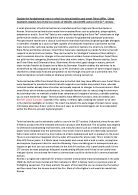Woven Fabrics
Plain weave
This is the most used weave construction, which can provide endless design variation though the use of plain, thick, and thin, fancy and coloured yarns plain weave is strong firm, and hardwearing and is used for many types of fabrics and end-uses, i.e. calico, gingham, muslin.
-
calico is plain weave low-cost cotton fabric, made in different weights and widths, suitable for experimental textiles work. A fashion designer will often use calico to make a prototype garment to help in the development of the flat pattern for a new design. Interior designers sometimes used calico foe making low-budget furnishing.
- Voile is a lightweight plain weave sheer fabric made from cotton, silk, rayon, nylon or worsted. It used for blouses, dresses, children’s wear, and curtains.
- Ripstop nylon is a high performance plain weave fabric in witch some of the warp and weft are doubled up at intervals in a warp and weft.
Twill Weave
Twill weave products fabric with diagonal lines witch generally run bottom left to top right on the fabric face. Weaving twills in different directions produces weave variations, such as herringbone or chevron. Twill weave drapes well and is one of the most used weave constructions, making fabrics such as gabardine or denim. Twill is used for a wide range of products such as jackets, suit, trousers and curtains.
- viyella is a 2/2 twill fabric woven from wool/cotton blend fibres in the warp and weft. Viyella fabrics are 55%wool 45%cotton and can have plain, checked or striped they are used for products such as shirts dresses and children’s wear.
Satin weave
-
a satin weave fabric is warp-faces, which makes it strong warp wise so it drapes well. Satin fabric has a smooth, shinny face and the weft shows only on the back. It is used for curtains linings evening wear upholstery, ribbons and trimmings depending on the fabric used – such as cotton polyester cotton acetate polyester silk.
- A sateen weave fabric is weft-faced so that the warps shows only on the back. It is often used as a base for more complicated weave constructions such as creaps
- Damask fabric are made from more expensive mercerised cotton, which is sometimes used for table cloths. The design is made by interchanging satin and sateen weaves, so that the fabric alternates between being warp and weft-faced.
Unit 2 knowledge and understanding of product design
Baby bedspread.
- why is the fabric used appropriate for the bedspread?
100% cotton that is used on a baby bedspread is a good idea because it is cool also it is very comfortable also it is soft against the body. 100% cotton is very strong also it has easy after care. Linen is also a good fabric to use because it is fast drying also it has a smooth feel to it. Linen is also very strong as well.
- name one piece of equipment which would be used during the assembly process foe the bedspread.
One part of equipment witch would be used is an over locker for neatening the edges inside of the bedspread.
- describe one quality check that would be performed during the assembly of this product.
One quality that would be checked is the stitching is strong and long lasting you would sew the seam and then maybe pull on the seam hard to see if is pulled apart or if it stays strong.
- explain how computer aided design (CAD) would be used to make sure that the minimum amount of fabric was used in cutting out the pattern pieces.
CAD would be used to cut out fabric all at the same time so that they were all the same size.
5.what techniques could be used to produce the farm animal design on the bedspread?
The techniques that could be used to make the farm animal are CAM could inbroyed the farm animals on to the bedspread also fabric panting could be used.
- Describe the aesthetic qualities of the bedspread.
The aesthetic and qualities of the bedspread are that cotton would leave a soft feel to bed spread also farm animals would be used as a good techniques as you have many ways of mounting the animal.







